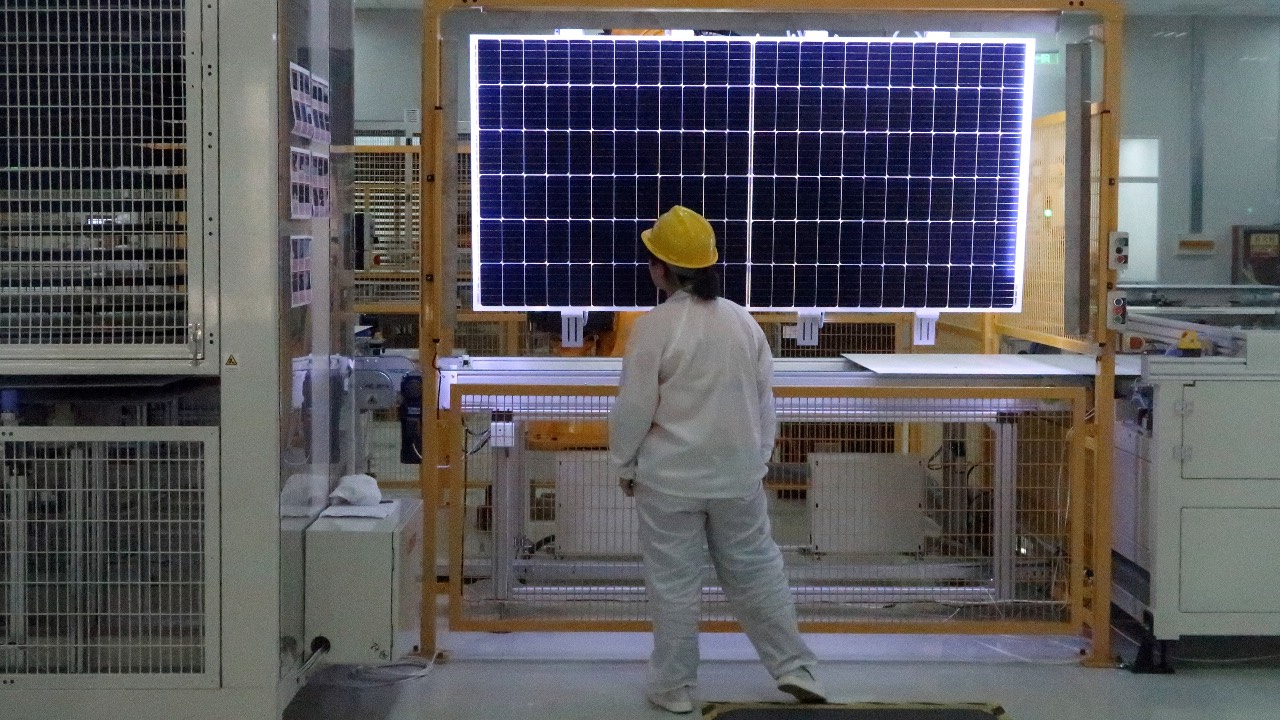
A worker conducts quality check of a solar module product at a solar equipment factory in Xi'an, Shaanxi province, China. /Muyu Xu/Reuters
A worker conducts quality check of a solar module product at a solar equipment factory in Xi'an, Shaanxi province, China. /Muyu Xu/Reuters
The conflict in Ukraine is proving to be a decisive moment for renewables in Europe where governments and businesses are looking to rapidly replace Russian gas with alternatives.
The amount of renewable power capacity added in Europe in the 2022-27 period is forecast to be twice as high as in the previous five-year period, driven by a combination of energy security concerns and climate ambitions, according to the latest International Energy Agency (IEA) report.
Beyond Europe, the upward revision in renewable power growth for the next five years is driven by China, the U.S. and India, which are all implementing policies and introducing regulatory and market reforms more quickly than previously planned to combat the energy crisis.
READ MORE
Spanish police raid Europe's drug 'super cartel'
The family with six generations of UK-China trading
China's forgotten heroes
As a result of its recent 14th five-year plan, China is expected to account for almost half of new global renewable power capacity additions over the 2022-2027 period.
Meanwhile, global renewable power capacity is now expected to grow by 2,400 gigawatts (GW) over the 2022-2027 period, an amount equal to the entire power capacity of China today, according to Renewables 2022, the latest edition of the IEA's annual report on the sector.
This massive expected increase is 30 percent higher than the amount of growth that was forecast just a year ago, highlighting how quickly governments have thrown additional policy weight behind renewables.
The report finds that renewables are set to account for over 90 percent of global electricity expansion over the next five years, overtaking coal to become the largest source of global electricity by early 2025.
00:29

'A historic turning point'
"Renewables were already expanding quickly, but the global energy crisis has kicked them into an extraordinary new phase of even faster growth as countries seek to capitalize on their energy security benefits," said IEA Executive Director Fatih Birol. "The world is set to add as much renewable power in the next five years as it did in the previous 20 years.
"This is a clear example of how the current energy crisis can be a historic turning point towards a cleaner and more secure future world energy system. Renewables' continued acceleration is critical to help keep the door open to limiting global warming to 1.5 degrees Celsius."
Utility-scale solar photovoltaics (PV) and onshore wind are the cheapest options for new electricity generation in a significant majority of countries worldwide.
Global solar PV capacity is set to almost triple over the 2022-2027 period, surpassing coal and becoming the largest source of power capacity in the world. The report also forecasts an acceleration of installations of solar panels on residential and commercial rooftops, which help consumers reduce energy bills.
Global wind capacity almost doubles in the forecast period, with offshore projects accounting for one-fifth of the growth. Together, wind and solar will account for over 90 percent of the renewable power capacity that is added over the next five years.
The report sees emerging signs of diversification in global PV supply chains, with new policies in the U.S. and India expected to boost investment in solar manufacturing by as much as $25 billion over the 2022-2027 period.
While China remains the dominant player, its share in global manufacturing capacity could decrease from 90 percent today to 75 percent by 2027.